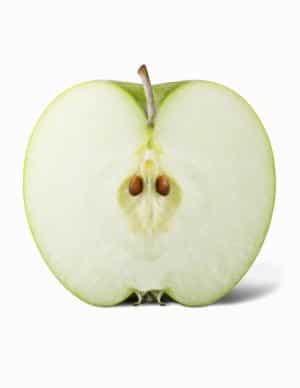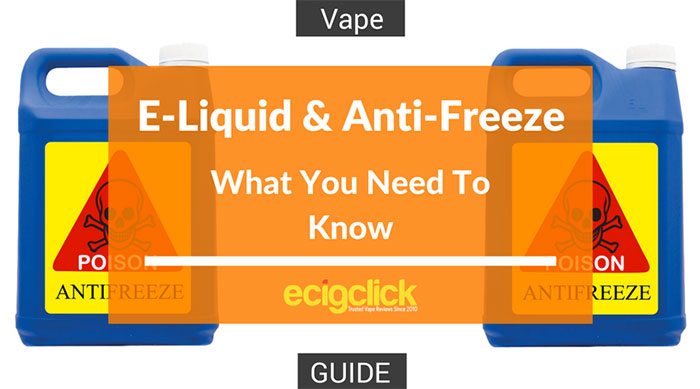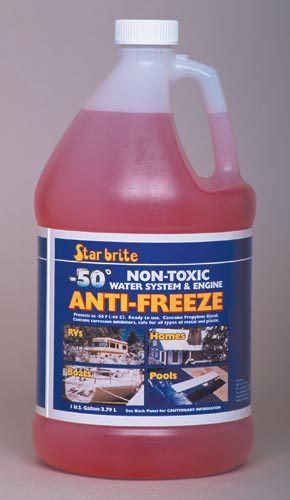Does E Liquid Really Contain Anti-Freeze?
A constant worry of new users to e cigs is the misconception that vape Juice contains antifreeze.
This article addresses those concerns and explains why those opposed to vaping consistently and wrongly raise the idea.
Especially worrying to people concerned about their health is when those who have ‘doctor’ or ‘professor’ in their titles spread such fears.
The first thing to remember is that as vaping takes off the money earned by tobacco companies and pharmacy companies selling quitting products has fallen.
These companies, and those who rely on money from them, are fighting hard to control the growth in electronic cigarette popularity.
Such people, who are qualified and hold responsible positions, have distorted the truth about vaping many times.
What does antifreeze do?
It is used to lower the freezing point of water so that it remains liquid at temperatures colder than 0°Celsius.
Does e-Liquid contain antifreeze?
No. Anybody telling you it does is either misinformed or lying.
What’s the point in raising it then?
People know that a lot of antifreeze products are poisonous. If you search online for incidences of poisoning you will find multiple results featuring pets that died after consuming it.
Pets are known to be attracted to it because of its appealing smell and sweet taste. What the articles fail to point out is that it is a chemical know as ethylene glycol to blame for this.
Children also find the smell and taste of ethylene glycol antifreeze products appealing and are at high risk from them.
Even if a person doesn’t die of poisoning, ethylene glycol antifreeze can cause crystals to form in the brain, heart, lungs, and kidneys and cause death that way.
*Some manufacturers have placed a chemical into antifreeze to make it taste bitter to stop animals and humans drinking it.
So why do people opposed to e cigarettes refer to antifreeze then?
Some antifreeze products contain propylene glycol instead of ethylene glycol. Propylene glycol (PG) is one of the two main ingredients in e-Liquid.
It sounds similar; does it have the same effect?
No.
In fact, when PG is used then the products are often labelled as “non-toxic antifreeze” to emphasise that safe aspect of them.
I’m still confused; it’s used in antifreeze but it isn’t antifreeze?
Think about a cake, it may use eggs to make it but it isn’t the same as a raw egg.

Also worth remembering is that many things might be poisonous but it is the quantity you swallow that kills.
Apple seeds contain cyanide (as well as cherries, peaches and almonds) but no one is campaigning to have them removed from the 5 A Day list.
But my friend suffered a bad reaction when vaping!
In all likelihood your friend is probably one of the few people who is intolerant towards PG, like some people have an intolerance of milk or wheat products. Some people have other vaping side effects.
Fortunately there are many low PG juices and 100% VG Vape Juice alternatives.
So I have nothing to worry about?
You have much less to worry about than the opponents of vaping would have you believe.
Plus, when compared to the toxins and carcinogens contained in cigarette smoke vaping is vastly safer.
Further PG facts:
- The body breaks PG down into chemicals that naturally occur as a result of normal, human metabolic functions.
- The US Food and Drug Administration lists PG as “Generally Recognised as Safe”.
- PG is coloured pink for use in antifreeze products to make it readily recognisable as non-toxic.
- PG is also approved for human inhalation by the Environmental Protection Agency, which is why it is safe to be used in fog machines.
- The germicidal properties of PG have been shown to promote healthier human lung function in some studies by killing bacteria.
Further Reading
- ATSDR
- Time – PG as an air germicide
- Journal of Pharmacology – The results of these experiments in conjunction with the absence of any observed ill effects in patients exposed to both triethylene glycol and propylene glycol vapours for months at a time, provide assurance that air containing these vapours in amounts up to the saturation point is completely harmless.








Thank you. Very useful information.